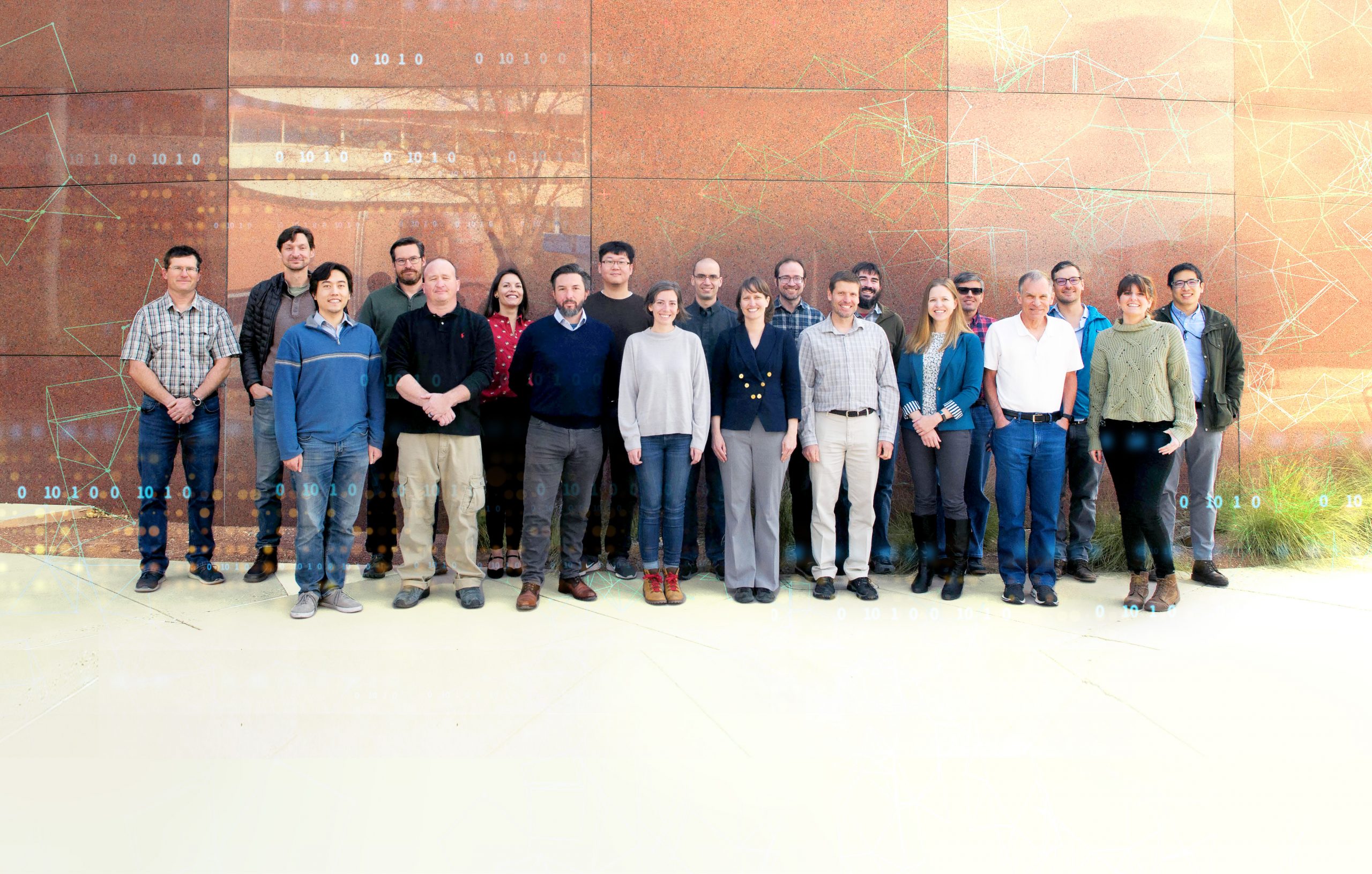The trapped ion quantum group at Sandia National Labs conducts experimental research in multiple areas, including full scale trapped ion quantum computing systems, integrated technology needed for scaling, trap fabrication and characterization, control systems, and ion clocks. Many of our projects leverage the MESA fabrication facility at Sandia. The group has been active in trapped ion quantum computing since around 2005 and maintains active collaborations with optical researchers, quantum computing theorists, and AMO physicists both inside and outside Sandia.

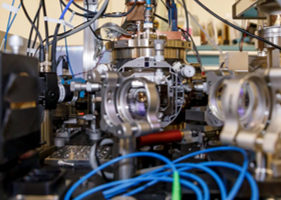
QSCOUT is a quantum computer based on trapped ions that is available to external researchers and provides uniquely low-level access to hardware controls. Users from around the US and world collaborate with Sandia QSCOUT staff to perform novel quantum computing experiments.
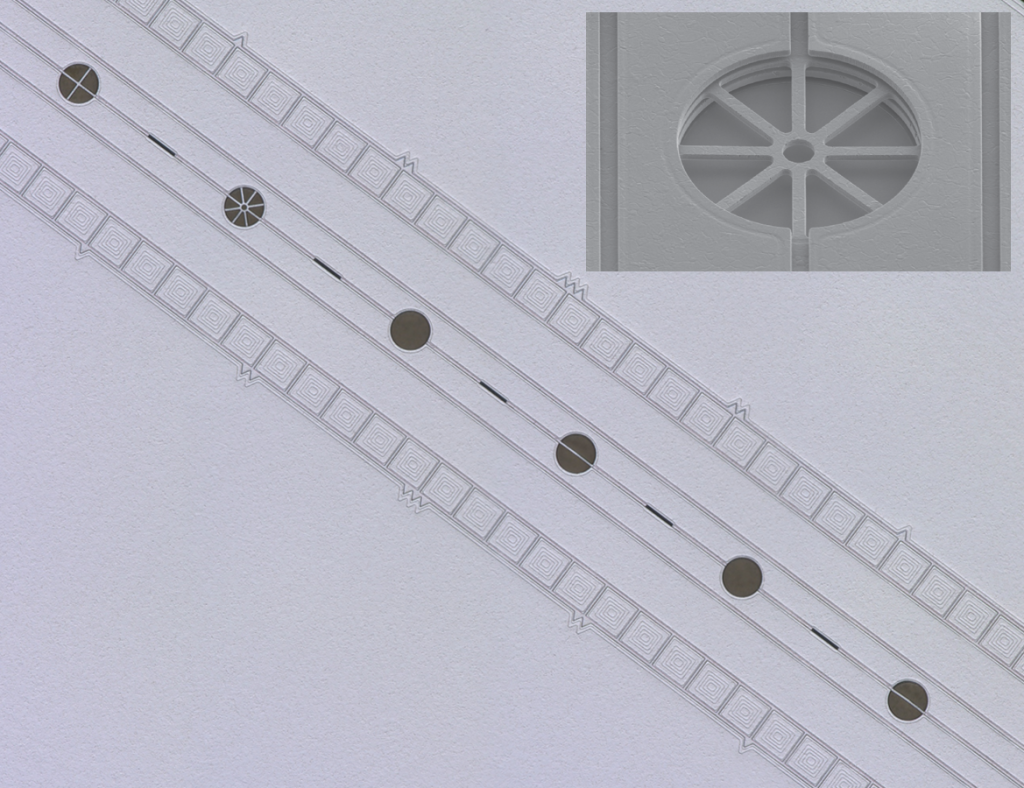
One of the world’s most accurate atomic clocks is based on a single trapped ion. Moving this capability from a lab-scale to a deployable system relies on integrating technologies listed above as well as applying precision optical pulses to multiple ions simultaneously.
Microfabricated ion traps rely on developing CMOS techniques for use far outside of normal operating conditions. Sandia collaborates with groups around the US and world to support multiple trapped-ion QC efforts with custom microfabricated surface traps.
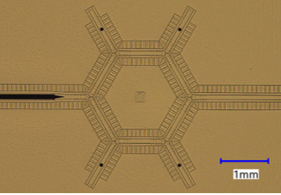
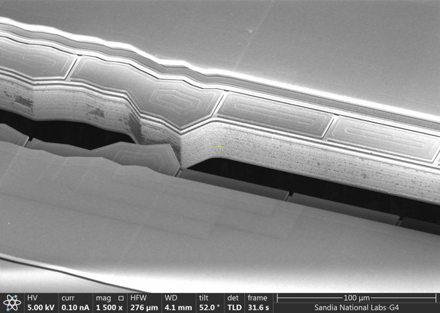
Microfabricated ion traps benefit from using CMOS processing techniques due to the improved robustness and yield that comes from industrial development, as well as the possibility of incorporating traditional CMOS circuitry into traps. However these standard CMOS processing techniques have to be adapted for use far outside of their normal operating parameters. For example, microfabricated ion traps must be able to tolerate the application of up to 300 volts of RF at up to 100 MHz to the trap electrodes in order to create strong trapping potentials. Challenges related to voltage breakdown, power dissipation, dielectric exposure, electrical routing, and integrated capacitors, to name a few, have been overcome in the process of successfully fabricating CMOS-based ion traps. Continued research is needed to support more complex and sophisticated ion traps.
For more information contact mrevell@sandia.gov
Component-level research is critical for understanding what technologies can ultimately satisfy the demanding requirements of a trapped-ion quantum computer. Sandia performs research in integrated photonics and other control and I/O technology to advance the goal of a scalable trapped-ion system.
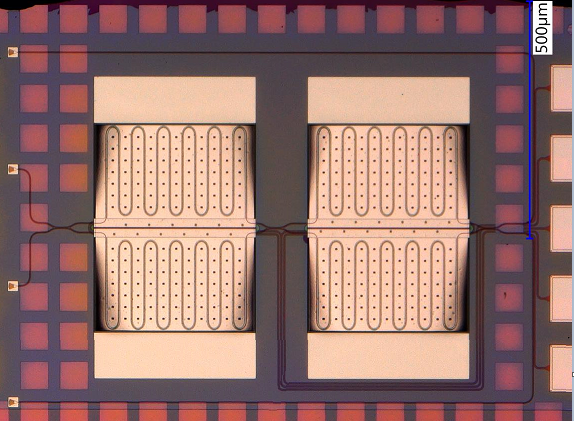
While lasers are usually directed to ions through free-space optics in current experiments, scaling to more ionic qubits demands an approach that can deliver light to a 2D array of ions without crosstalk. Sandia is working on approaches that utilize waveguides and integrated modulators to make this a reality for both quantum computing and atomic clock applications. Much of our work is performed in collaboration with photonics researchers at Sandia.
For more information contact dlstick@sandia.gov

Waveform generators that provide low-level user control over the amplitude, shape, duration, frequency, and phase of an electronic pulse are needed for precisely controlling the quantum state of an ion. Driven by commercial applications like 5G wireless and industrial Internet-of-Things, recent FPGA developments, including systems-on-chip that incorporate multicore microprocessors, provide an excellent hardware platform for enabling Sandia’s research in developing these flexible waveform generators for trapped-ion quantum computing.
Publications
View Trapped Ions publications and patents.
Job Announcements
See all careers related to “Trapped Ions” here on Sandia’s Careers website
